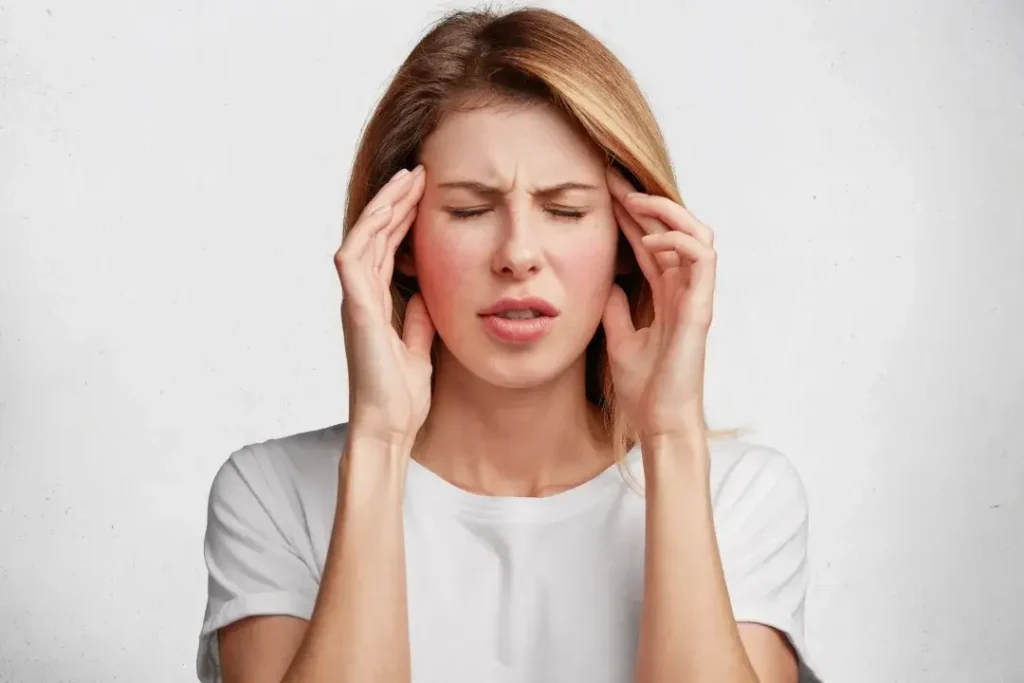Ocular migraine is also known as visual migraines or retinal migraines are a type of migraine headache that can cause temporary visual disturbances. These disturbances can include flashing lights, zigzag lines, blind spots, and other visual hallucinations. While they can be alarming, ocular migraines are generally not dangerous and usually go away on their own without treatment. However, it is important to understand the symptoms and potential causes of ocular migraines in order to properly manage them.
Symptoms of Ocular Migraine
Ocular migraines can cause a variety of visual disturbances, including:
- Bright or flashing lights
- Zigzag or wavy lines
- Blind spots or areas of decreased vision
- Temporary vision loss in one eye
- Scintillations (sparkling or twinkling lights)
- Other visual hallucinations
These symptoms typically last for 20-30 minutes and may occur in one or both eyes. Some people also experience headache pain during or after an ocular migraine, while others do not.
Also Read: Pain on Left The Side of Head Near The Temple
Causes of Ocular Migraines
The exact cause of ocular migraines is not well understood, but they are believed to be related to changes in blood flow to the brain and the eyes. Some triggers that may contribute to the development of ocular migraines include:
- Stress
- Hormonal changes (such as those that occur during menstruation)
- Dehydration
- Lack of sleep
- Certain foods (such as chocolate, cheese, and red wine)
- Certain medications (such as birth control pills)
- Eye strain or fatigue
- Bright lights or flickering screens
- Changes in weather or altitude
While these triggers may increase the likelihood of an ocular migraine, they do not always cause one to occur.
Diagnosis of Ocular Migraines
If you experience visual disturbances that are consistent with ocular migraines, it is important to see an eye doctor or neurologist for a proper diagnosis. Your doctor will perform a thorough eye exam and may order additional tests to rule out other potential causes of your symptoms, such as a retinal tear or detachment.
Treatment of Ocular Migraines
In most cases, ocular migraines do not require specific treatment and will go away on their own within 20-30 minutes. However, if your symptoms are severe or are causing significant disruption to your daily life, your doctor may recommend medications or other therapies to manage your symptoms. These may include:
- Pain relievers, such as aspirin or ibuprofen, to manage headache pain
- Anti-nausea medications, such as metoclopramide, to manage nausea or vomiting
- Triptans, a class of medications used to treat migraines
- Beta-blockers, a type of medication used to prevent migraines
- Calcium channel blockers, a type of medication used to prevent migraines
In addition to medications, there are several lifestyle changes that may help reduce the frequency and severity of ocular migraines. These may include:
- Getting enough sleep
- Staying hydrated
- Avoiding triggers such as bright lights or flickering screens
- Managing stress through relaxation techniques or exercise
- Eating a healthy, balanced diet
Prevention of Ocular Migraines
While it may not be possible to completely prevent ocular migraines, there are steps you can take to reduce your risk of experiencing them. These may include:
- Identifying and avoiding triggers that are known to cause your migraines
- Taking medications as prescribed by your doctor to prevent migraines
- Getting regular exercise and maintaining a healthy weight
- Eating a healthy, balanced diet
- Managing stress through relaxation techniques or therapy
When to Seek Medical Attention
Ocular migraines are a specific type of migraine that result in temporary visual disturbances such zigzag lines, blind spots, and flashing lights.
Here are some situations in which you should seek medical attention for ocular migraines:
- If, in addition to the visual abnormalities, you also suddenly develop a terrible headache.
- If the visual disturbances last longer than an hour.
- if there are further symptoms occurring, such as numbness, weakness, or speech difficulties, in addition to the visual problems.
- If you experience ocular migraines frequently or they are getting worse over time.
- If you have a history of migraines and develop new or different symptoms.
- If the visual disturbances interfere with your daily activities or ability to drive.
It’s important to see a healthcare provider if you experience any of these symptoms to rule out other conditions and receive appropriate treatment for ocular migraines.
Related: Why do I eat more when I have a migraine?


